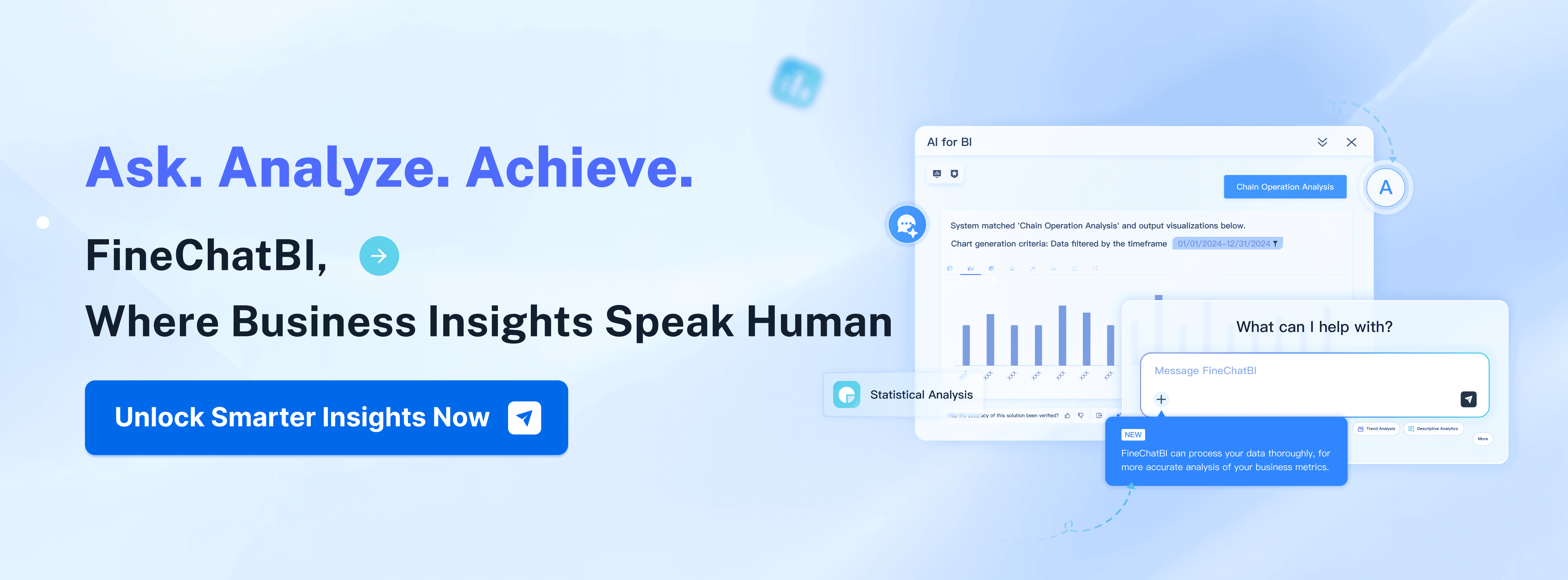You want to make smarter decisions for your business in 2025. Here are the top 9 best ai tools for data analysis 2025:
- FineChatBI by FanRuan
- Tableau AI
- Microsoft Power BI Copilot
- Google Cloud AutoML Tables
- IBM Watson Studio
- DataRobot
- Amazon SageMaker
- Julius AI
- Polymer
The right data analysis tool lets you unlock data-driven decisions, boost analytics, and gain insights that drive your strategy. AI transforms how you analyze data by speeding up analysis, improving accuracy, and helping you respond quickly to trends.
| Statistic Description | Value |
|---|---|
| Organizations using AI in at least one function | 78% |
| Organizations implementing or planning to implement AI | 65% |
| AI adoption rate in IT and telecommunications | 38% |
| AI budget allocation in retail businesses | 20% |
| Global annual spending on AI in financial services | Over $20 billion |
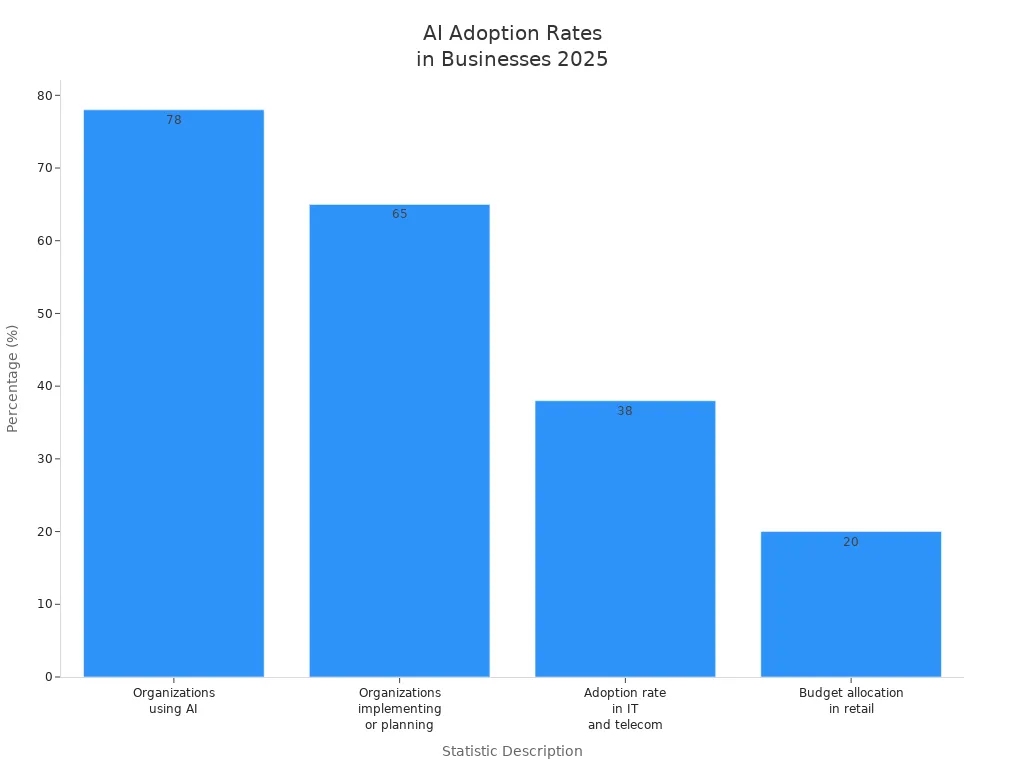
- AI tools give you real-time insights for faster decisions.
- You can forecast trends and optimize operations with data-driven analytics.
- AI lets you process data quickly and react to changes in your market.
What Are AI Data Analysis Tools?
Definition and Core Functions
You use data analysis tools to make sense of large amounts of information. These tools help you automate tasks like preparing, cleaning, and modeling data. They use technologies such as machine learning and data visualization to give you faster and more accurate results. You can rely on data analytics tools to improve your decision-making and lower the cost of running analytics.
Data analysis tools let you focus on finding insights instead of spending hours on manual work.
Here is a table that shows how leading technology organizations define these tools and their main capabilities:
| Definition of AI Data Analysis Tools | Capabilities and Applications |
|---|---|
| AI analytics automates labor-intensive tasks such as data preparation, cleansing, and modeling. | Enhances efficiency and accuracy in deriving insights from large datasets. |
| Leverages advanced technologies like machine learning and data visualization. | Improves business decision-making and lowers ongoing costs of analytics. |
You can see that core functions include automating data analysis, generating insights, and streamlining research. The table below highlights more functions:
| Core Function | Description |
|---|---|
| Automating Data Analysis | AI tools streamline the process of analyzing large datasets, reducing manual effort. |
| Generating Insights | These tools can extract key insights and trends from existing research. |
| Creating Knowledge Graphs | AI tools can visualize connections between related concepts. |
| Statistical Analysis of Trends | They provide statistical insights into research trends and patterns. |
| Self-Service Analytics | You can explore and analyze data independently without needing technical skills. |
Importance in 2025
You face more data than ever before. AI data analysis tools help you process and interpret huge volumes of information. These tools turn raw data into actionable insights that guide your decisions. The future of data analytics platforms is moving toward more automation and ai integration. You can now analyze data in real time and spot trends quickly.
- Generative AI will have an economic impact of $2.6 trillion to $4.4 trillion by 2025.
- Open source innovation makes it easier for you to deploy new solutions.
- Cloud AI and edge computing give you more options for handling data.
AI-powered business intelligence is changing how you work. You get ai-powered insights that help you react faster to market changes. Data analysis tools let you unlock the full value of your data. You can use analytics to improve operations and stay ahead of competitors.
Best AI Tools for Data Analysis 2025

You want to choose the best ai tools for data analysis 2025 to unlock real-time insights and drive smarter decisions. Here are the top solutions you should consider for your business.
1.FineChatBI by FanRuan
FineChatBI by FanRuan stands out among data analysis tools for its conversational approach. You interact with your data using natural language, making analysis accessible to everyone. The tool uses Text2DSL technology, which interprets your queries with precision. You get a complete analysis loop, moving from descriptive to prescriptive analytics. FineChatBI helps you generate actionable insights quickly, so you can respond to changes in your business environment.
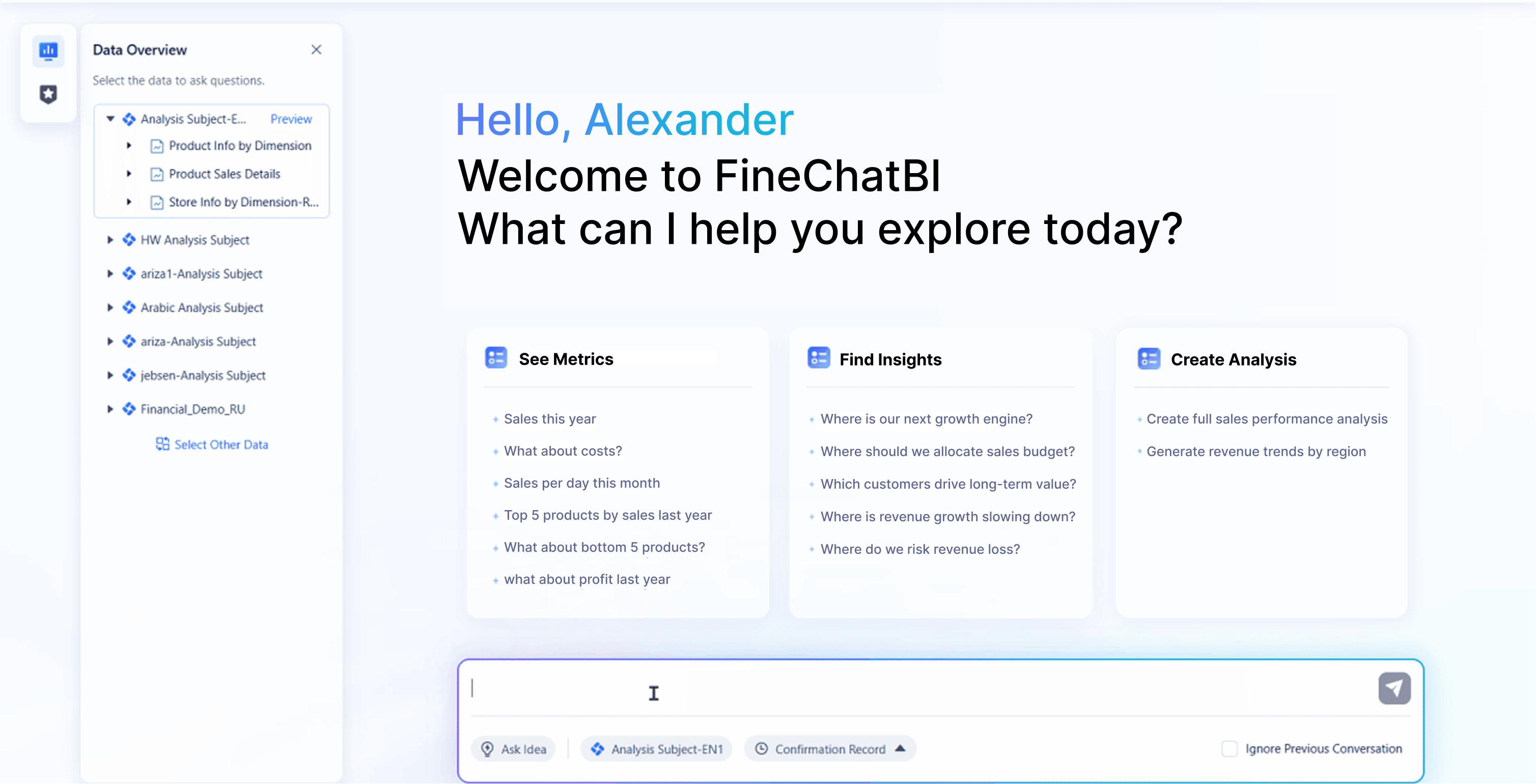
Website: https://www.fanruan.com/en/finebi
| Unique Features | Primary Use Cases |
|---|---|
| Natural language processing for data queries | Enables organizations to interact with data conversationally |
| Text2DSL technology for precise query interpretation | Democratizes data access |
| Comprehensive analysis loop from descriptive to prescriptive | Provides actionable insights based on user queries |
You can use FineChatBI to analyze sales trends, forecast risks, and share insights with your team. The platform gives you real-time insights and supports decision-making at every level.
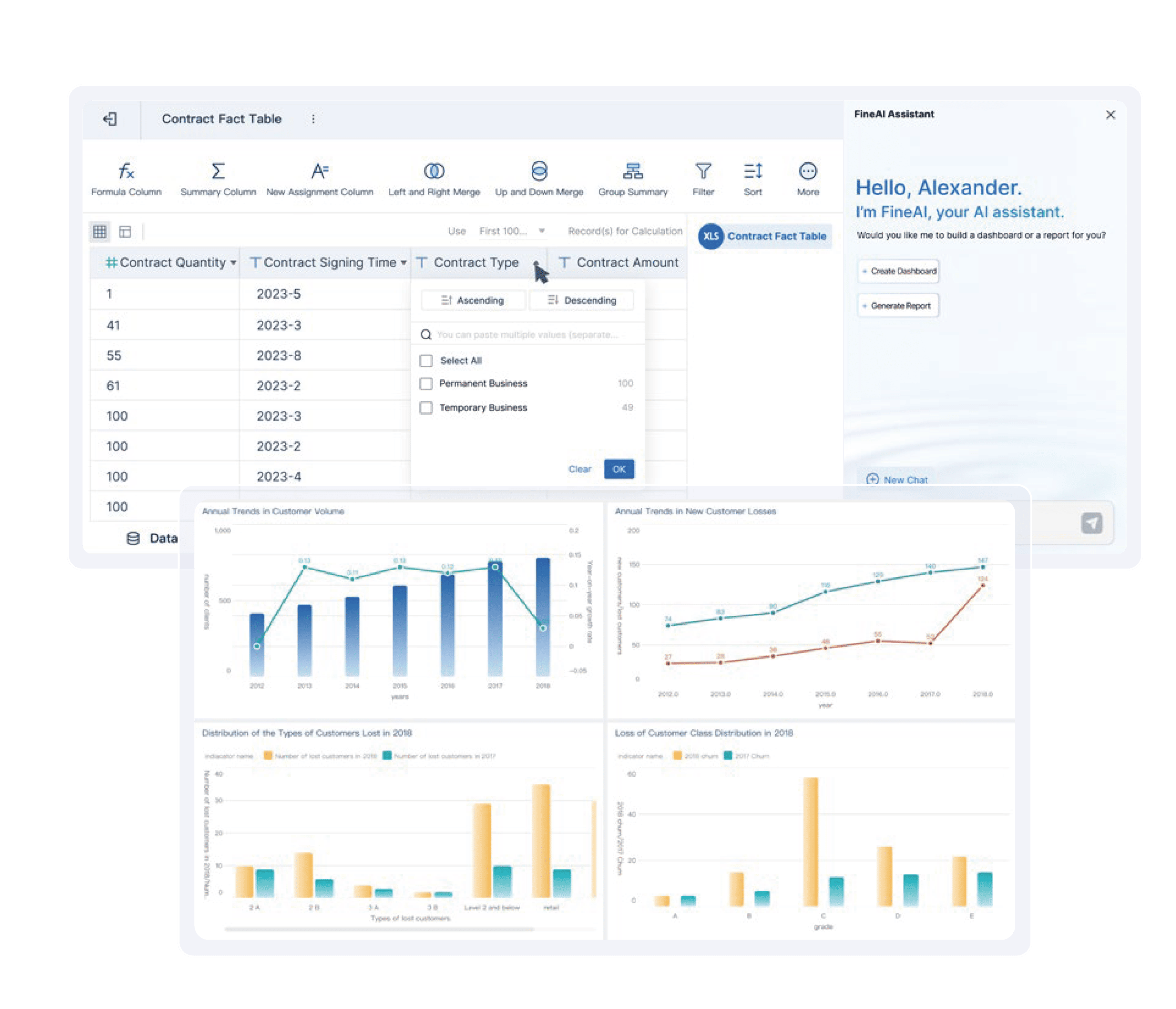
- User-friendly interface allowing plain language queries
- Utilizes Text2DSL technology for transparency
- Real-time analytics for immediate insights
- Complete analysis loop from descriptive to prescriptive analytics
You can explore trends, forecast risks, and collaborate with your team using FineChatBI. The tool makes analytics accessible, so you do not need technical skills to get valuable insights.
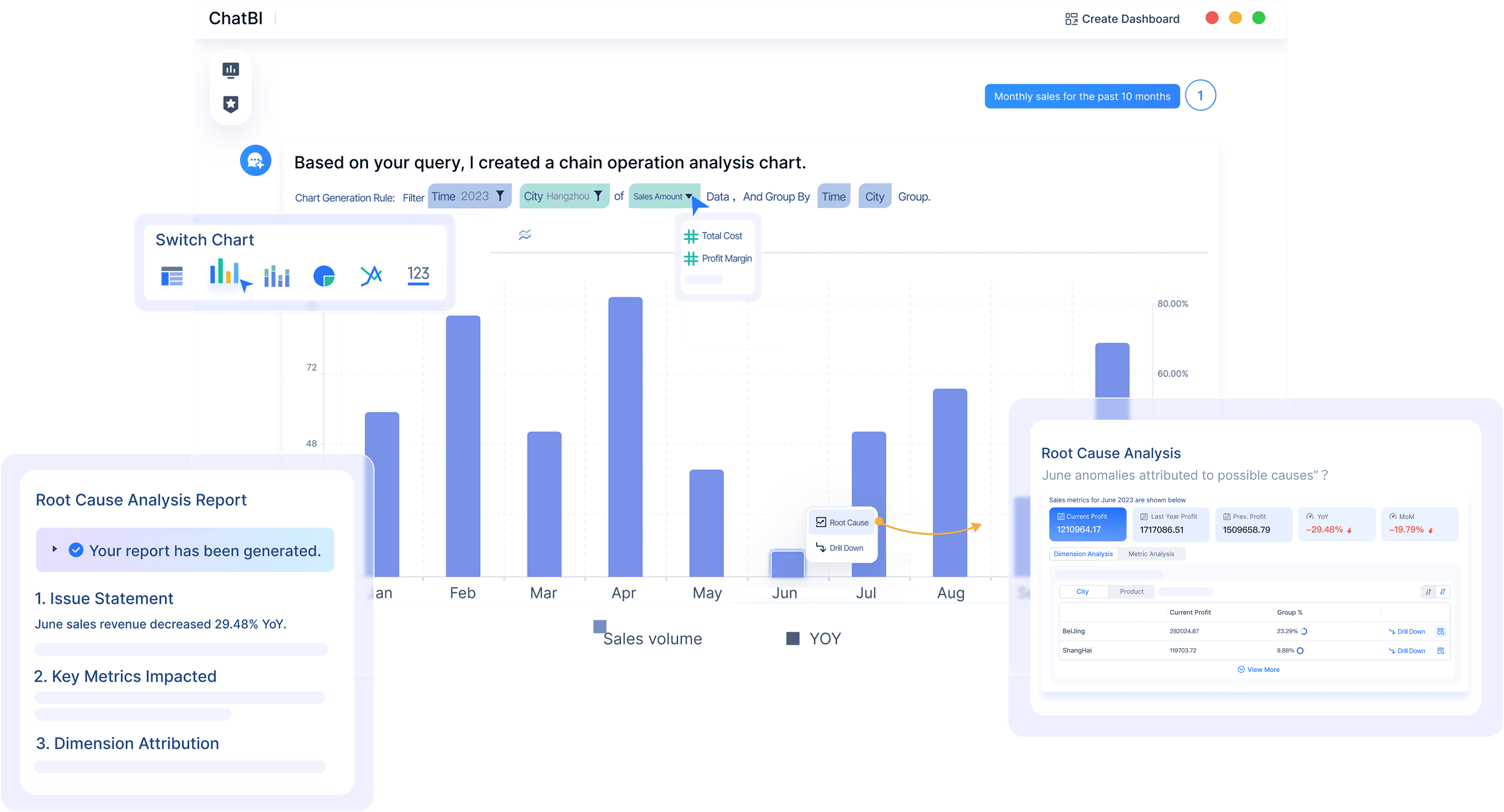
2.Tableau AI
Tableau AI is one of the best data analytics software options for visual analysis. You get personalized insights and metrics using natural language. Tableau AI delivers contextual insights within your workflow, integrating with tools like Slack and Microsoft Teams. You can uncover trends and patterns quickly through enhanced Q&A features.
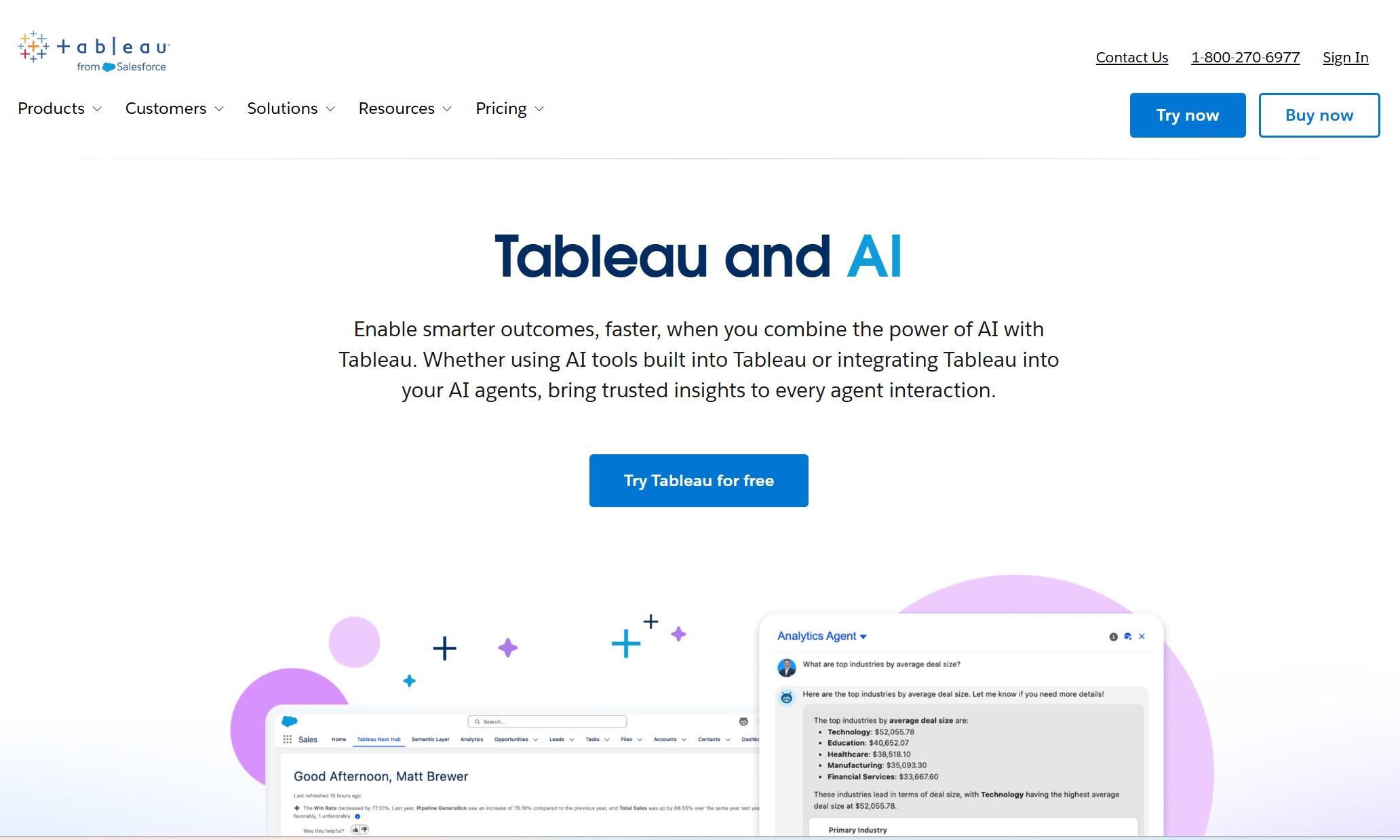
Website: https://www.tableau.com/products/artificial-intelligence
| Feature | Description |
|---|---|
| Personalized Insights | Provides personalized metrics and insights using natural language and visual explanations. |
| Contextual Insights | Delivers timely insights within tools like Slack and Microsoft Teams, integrating key metrics into workflows. |
| Enhanced Q&A | Allows users to uncover insights quickly through natural language queries, offering clear explanations and citations. |
Tableau AI helps you visualize data, spot trends, and share analysis with your team. You can use it for real-time insights and interactive dashboards.
3.Microsoft Power BI Copilot
Microsoft Power BI Copilot brings ai-powered automation to your data analysis. You get enhanced data visualization and automated workflows. The tool recognizes patterns across large datasets and uses predictive analytics for forecasting. Copilot integrates with Excel and Power BI, so you can analyze data and visualize trends without deep technical skills.

Website: https://www.microsoft.com/en-us/power-platform/products/power-bi
| Benefit | Description |
|---|---|
| Report Generation | Automates report creation by suggesting relevant visualizations based on user queries. |
| Trend Analysis & Forecasting | Helps identify patterns and generate predictive insights for strategic planning. |
| Automated Insights | Continuously scans data to uncover insights and flag unusual patterns for proactive decision-making. |
| Data Integration | Assists in integrating data from multiple sources, ensuring consistency and accuracy in reporting. |
- Visualization: Auto-generates charts based on plain-language prompts.
- Automation: Replaces repetitive tasks with automated workflows.
- Pattern recognition: Identifies patterns across large datasets without deep technical input.
- Prediction: Uses generative ai for forecasting trends and operational bottlenecks.
You can use Power BI Copilot to streamline your analytics and get real-time insights for better planning.
4.Google Cloud AutoML Tables
Google Cloud AutoML Tables gives you advanced machine learning for data analysis. You get an end-to-end platform with Vertex AI, which covers data preparation, model training, deployment, and monitoring. You can bring your own models and training scripts for flexibility. The platform supports MLOps, so you can version datasets and track experiments.

Website: https://cloud.google.com/automl
| Feature | Description |
|---|---|
| End-to-end platform | Vertex AI provides tools for data preparation, model training, evaluation, deployment, and monitoring. |
| Custom models | Users can bring their own models and training scripts, allowing for greater flexibility. |
| MLOps support | Includes capabilities for versioning datasets and models, tracking experiments, and monitoring performance. |
| Vertex AI Pipelines | Enables creation of reproducible and scalable machine learning workflows, automating many tasks. |
| Integration with Google Cloud | Improved integration with other Google Cloud services enhances efficiency and effectiveness. |
You can automate your analysis and scale your analytics with Google Cloud AutoML Tables. The platform helps you manage large volumes of data and generate insights efficiently.
5.IBM Watson Studio
IBM Watson Studio supports end-to-end data analysis workflows. You can start with raw data and build trained models quickly. The AutoAI feature runs algorithms and tunes hyperparameters for you. Watson Studio offers low-latency inference, which is suitable for real-time applications.
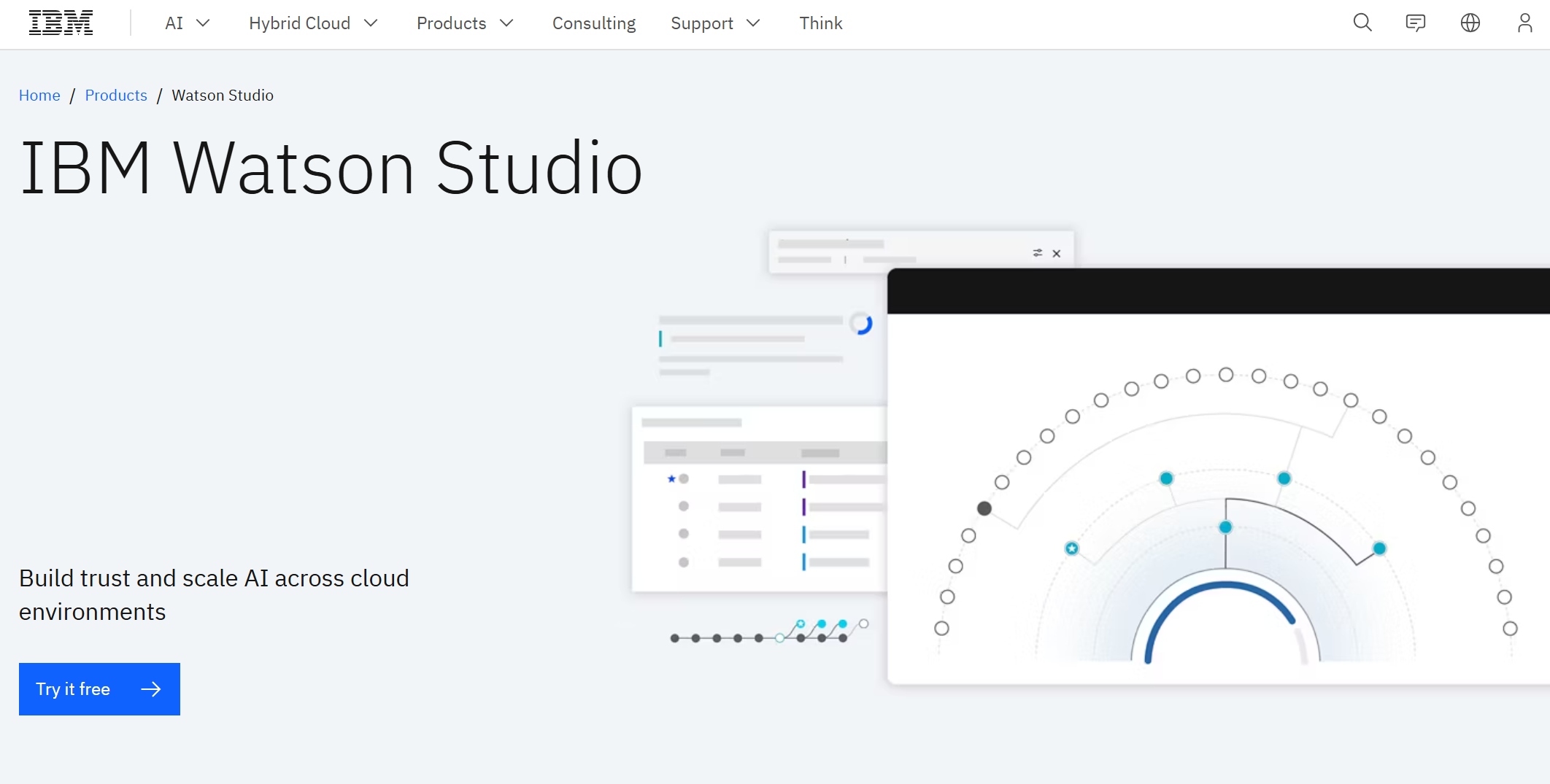
Website: https://www.ibm.com/products/watson-studio
| Feature | User Experience |
|---|---|
| Startup Time | Fast; from raw data to a trained model in under an hour. |
| AutoAI | Efficient; automatically runs algorithms and tunes hyperparameters. |
| Inference Performance | Solid; low latency suitable for real-time applications. |
| Overall Comparison | Reliable for enterprise-grade AI workloads compared to AWS Sagemaker. |
| Workflow Steps | Data ingestion, training with AutoAI, deployment via Watson Machine Learning, monitoring with Watson OpenScale. |
You can use Watson Studio for enterprise-grade analytics and real-time insights. The platform helps you automate analysis and monitor model performance.
6.DataRobot
DataRobot is one of the best ai tools for data analysis 2025 for automated machine learning. You can build, deploy, and manage predictive models quickly. The platform automates feature engineering, model selection, and training. DataRobot provides tools for model evaluation and interpretation, so you understand how your models work.
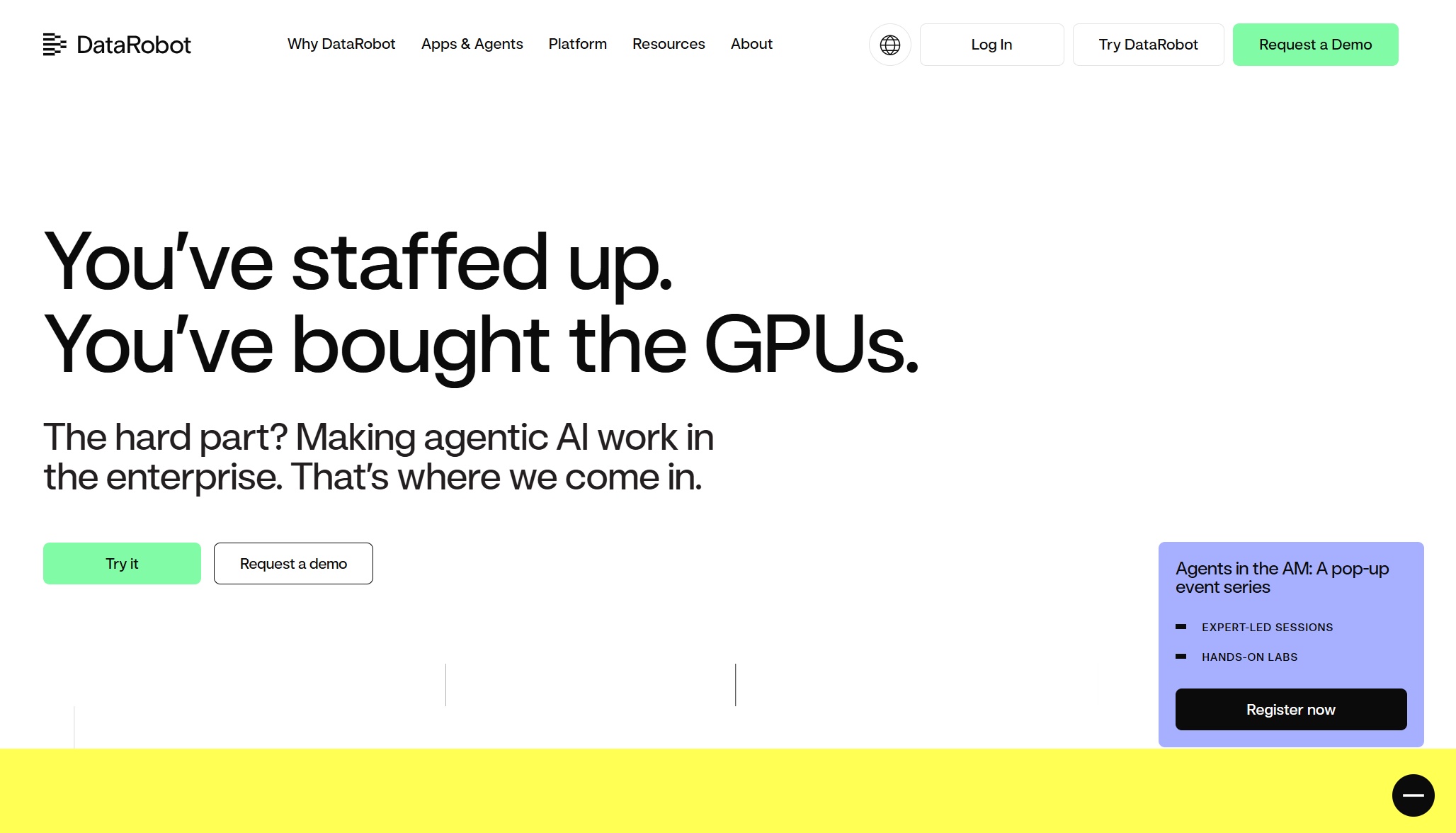
Website: https://www.datarobot.com/
| Feature | Description |
|---|---|
| Automated Machine Learning | Automates the end-to-end process of building, deploying, and managing predictive models quickly and efficiently. |
| Automated Feature Engineering | Creates new features from datasets to improve model performance by identifying patterns and generating additional features. |
| Model Selection and Training | Automatically selects and trains multiple models, evaluating their performance in parallel to find the best one. |
| Model Evaluation and Interpretation | Provides detailed evaluations and tools for understanding model performance and feature impact. |
| Model Deployment and Monitoring | Simplifies model deployment and continuously monitors performance to ensure accuracy and reliability. |
| Continuous Learning and Optimization | Supports automatic retraining and optimization to keep models updated with new data and improve performance. |
You can use DataRobot to automate your analytics and keep your models up to date with new data. The platform helps you generate insights and improve your analysis efficiency.
7.Amazon SageMaker
Amazon SageMaker offers scalable ai for large-scale data analysis. You can integrate SageMaker with AWS services like S3, Glue, Athena, Lambda, and QuickSight. This integration streamlines your workflow from data collection to model deployment. SageMaker automatically scales to handle large datasets, so you do not need to manage infrastructure.
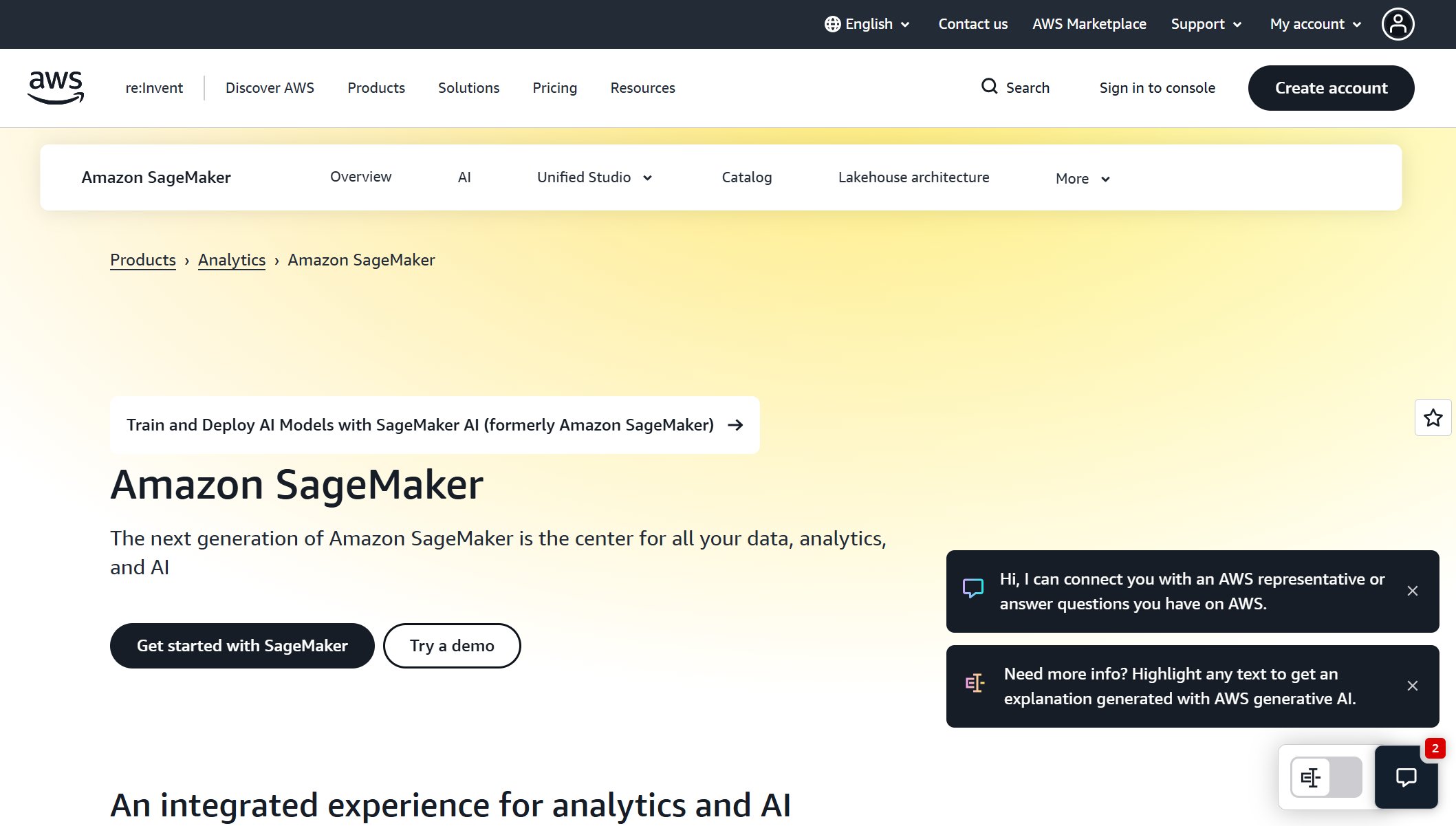
Website: https://aws.amazon.com/sagemaker/
- Integrates with Amazon S3 for data storage and retrieval.
- Works with AWS Glue for data preparation and ETL tasks.
- Utilizes Amazon Athena for querying data directly from S3 using SQL.
- Collaborates with AWS Lambda for automating workflows.
- Integrates with Amazon QuickSight for data visualization.
You can use SageMaker to train and deploy models across multiple endpoints. The platform supports real-time insights and helps you manage analytics at scale.
8.Julius AI
Julius AI uses a conversational interface for data analysis. You interact with your data using natural language, so you do not need technical skills. The platform generates charts and graphs automatically, making your analysis clear and easy to understand. Julius AI automates workflows, so you can schedule reports and alerts for key performance indicators.

Website: https://julius.ai/
| Feature | Description |
|---|---|
| Conversational Interface | Users can interact with data using natural language, making it accessible without technical skills. |
| Strong Visualization Tools | Automatically generates charts and graphs to present data clearly, enhancing understanding. |
| Automation of Workflows | Allows scheduling of reports and alerts for monitoring key performance indicators. |
| Advanced Statistical Functions | Includes capabilities like regression analysis and time-series modeling for in-depth analysis. |
You can use Julius AI for advanced statistical analysis and real-time insights. The tool helps you monitor trends and share analytics with your team.
9.Polymer
Polymer simplifies data analysis for non-technical users. You ask questions about your data using natural language, and Polymer generates visualizations automatically. You can create customizable dashboards without coding. The built-in conversational AI assistant, PolyAI, helps you analyze data and generate insights.
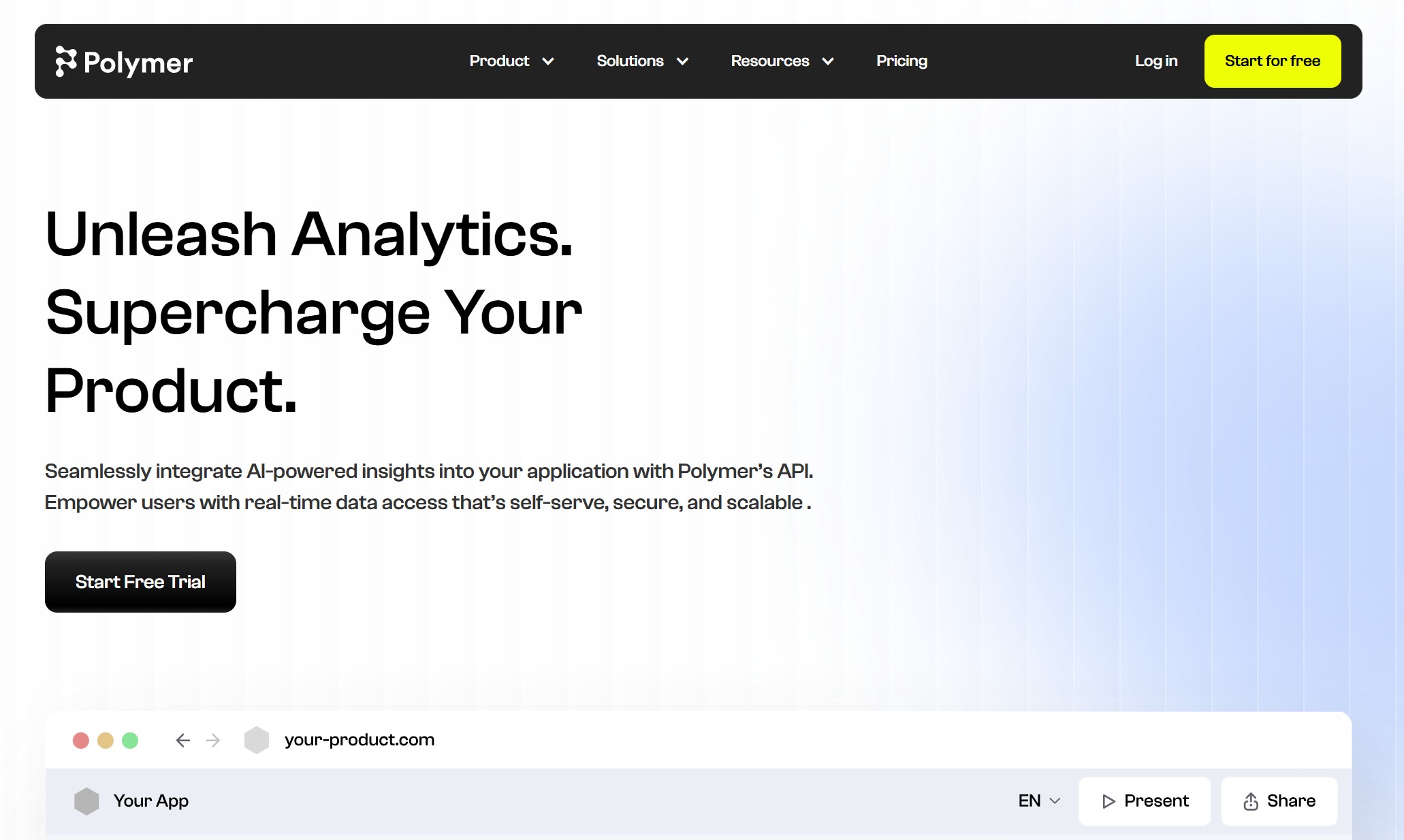
Website: https://www.polymersearch.com/
| Feature | Description |
|---|---|
| Natural Language Interaction | Users can ask questions about their data using natural language, making it accessible for non-technical users. |
| Automatic Visualization Generation | Polymer can automatically generate visualizations based on the data provided, reducing the need for manual input. |
| Customizable Dashboards | Users can create fully customizable dashboards without requiring technical skills, enhancing user experience. |
- Converts complex data into readable visualizations without scripting.
- Offers a built-in conversational AI assistant (PolyAI) that generates visualizations based on user instructions.
- Provides various dashboard and spreadsheet templates for easy data analysis.
You can use Polymer to get real-time insights and make analytics accessible to everyone in your organization.
Tip: When you choose the best ai tools for data analysis 2025, look for platforms that offer real-time insights, automation, and easy access to analytics. These features help you unlock the full value of your data and improve your analysis.
Data Analytics Tools Comparison
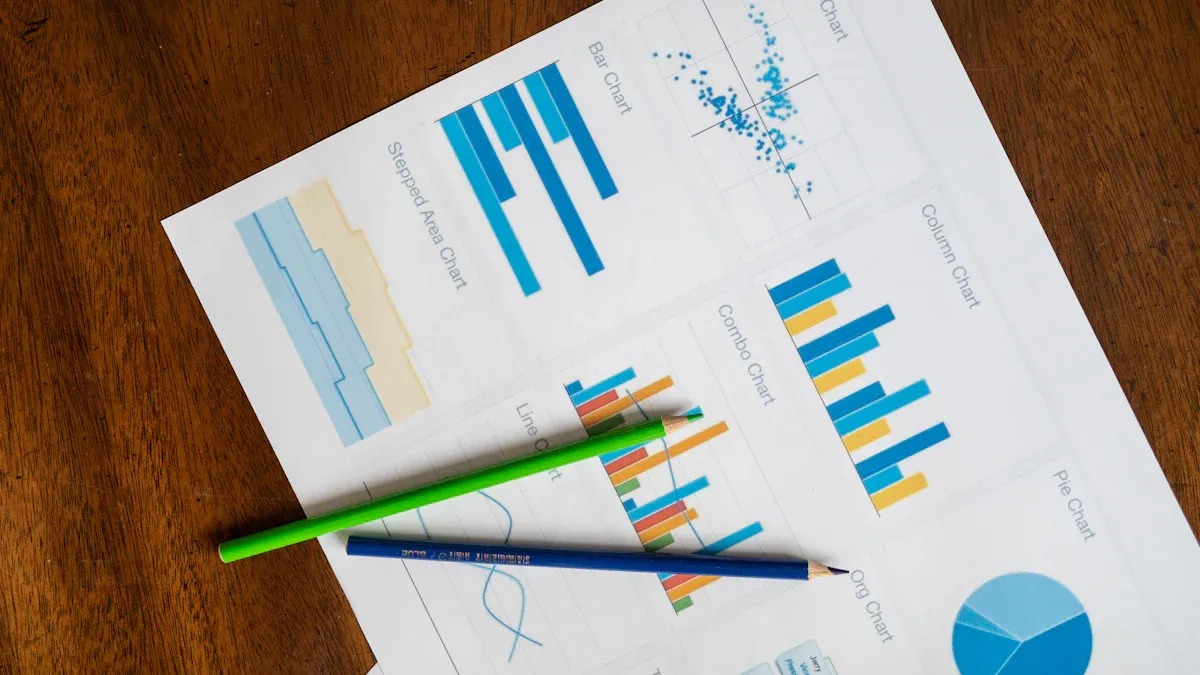
Feature Overview
You want to choose the best data analysis tools for your business. Each tool offers unique features that help you work with data and get valuable insights. Some tools use ai to let you ask questions in plain language. Others focus on automating tasks or providing interactive data visualization. You can find platforms that support real-time analytics, drag-and-drop interfaces, and flexible deployment options.
| Feature | Description |
|---|---|
| Augmented Analytics | NLP and smart search for easy insights |
| Automation Workflows | Event-driven actions and low-code automation |
| Intuitive Interface | Drag-and-drop, no coding needed |
| Real-time Data Analysis | Immediate insights for fast decisions |
| Flexible Deployment | Multi-cloud, on-premise, or hybrid options |
| Data Literacy Promotion | Encourages teamwork and understanding |
| Interactive Data Visualization | Dynamic charts and graphs for deeper analysis |
You can use these features to improve your data analysis and make better decisions.
Pros and Cons
When you compare data analysis tools, you should look at the advantages and disadvantages. Some tools give you quick answers and strong visualization. Others may have a steeper learning curve or higher costs. The table below helps you see the main points.
| Tool | Advantages | Disadvantages |
|---|---|---|
| FineChatBI | Natural language queries, real-time analytics, transparent analysis | Pricing models suit larger organizations |
| Tableau AI | Quick answers, effective data visualization, strong insights | Advanced features need more learning |
| Power BI Copilot | Automated data preparation, wide features, community support | Resource-intensive for complex models |
| Google AutoML Tables | Seamless integration, robust ML, scalable resources | Costs can escalate with usage |
| DataRobot | Excels at automated ML, user-friendly, automates feature engineering | High automation may obscure model predictions |
| IBM Watson Studio | Robust ML, effective visualization, IBM integration | Pricing may be expensive, limited customization |
| Julius AI | Conversational interface, strong visualization, workflow automation | Advanced analytics may require upgrades |
| Polymer | Automates analysis, insightful visualizations, easy dashboards | Limited advanced analytics for experts |
| Amazon SageMaker | Scalable ai, real-time analytics, AWS integration | Costs can rise with large data volumes |
You can use this table to match your needs with the right tool.
Pricing Summary
You need to consider pricing when you select data analysis tools. Small businesses often start with free or low-cost options. Medium businesses look for paid solutions with more features and support. Large enterprises invest in advanced platforms for real-time analytics, integration, and complex analysis.
- Small enterprises: Free or low-cost tools for light data analysis and exploration.
- Medium enterprises: Paid solutions with unlimited queries, team collaboration, and advanced analytics.
- Large enterprises: Enterprise-grade tools with reliability, integration, and advanced features for large data volumes and complex analysis.
Tip: Always check if the tool offers a free trial or demo. You can test real-time analytics and interactive data visualization before making a decision.
How to Choose AI Data Analysis Tools
Selection Criteria
You need to select ai data analysis tools that match your business goals. Start by looking at how each tool handles data analysis. Check if the platform supports real-time analysis and if it can process large volumes of data. Make sure the tool offers automation for repetitive tasks. Look for solutions that allow you to ask questions in plain language. Consider if the tool provides transparent results and supports data-driven decision-making. Review integration options with your existing systems. Evaluate the security features to protect your data. Pricing and scalability also matter when you plan for growth.
Tip: Choose data analysis tools that make data-driven decisions easier and help you unlock insights quickly.
Use Cases
You can use ai data analysis tools across many industries. These tools help you improve operations and make better decisions. The table below shows common use cases for data analysis in different sectors:
| Industry | Use Cases |
|---|---|
| Healthcare | Early disease detection, personalized treatment plans, continuous patient monitoring. |
| Retail & Ecommerce | Real-time personalization, smart inventory management, automated support. |
| Banking & Financial | Credit risk modeling, fraud detection, customer support automation. |
| Insurance | Underwriting, claims processing, fraud prevention. |
| Manufacturing | Predictive maintenance, real-time defect detection, production line optimization. |
| Education | Adaptive learning systems, automated grading, virtual classroom environments. |
| Supply Chain | Intelligent contract analysis, spend categorization, supplier risk prediction. |
| Business Operations | Process automation, smarter workflows across departments. |
| Government | Enhancing citizen services, improving decision-making. |
| Agriculture | Crop monitoring, weather-based irrigation optimization, pest identification. |
| Construction | Project planning, site safety monitoring, automated equipment scheduling. |
| Marketing | Campaign optimization, content creation at scale. |
| Media & Entertainment | Personalized recommendations, automated content editing. |
| Tourism & Hospitality | Enhancing service quality, operational efficiency. |
| Legal & Compliance | Document intelligence, compliance monitoring. |
You can see that ai and data analysis drive improvements in real-time monitoring, automation, and data-driven decision-making.
Expert Tips
You can maximize the value of ai data analysis tools by following these expert tips:
- Ensure high-quality, clean data for accurate analysis. Regularly clean, standardize, and validate your data.
- Maintain transparency in ai models. Build trust through explainability, auditing, and clear documentation.
- Update models with new data to keep analysis relevant and accurate.
- Address ethical concerns. Mitigate bias, ensure data privacy, and define accountability in ai decisions.
- Foster collaboration between data scientists and domain experts. Align ai models with business needs for better data-driven decisions.
Note: Real-time analytics and continuous learning help you adapt quickly and improve your data-driven decision-making.
FanRuan Success Stories in Data Analysis
BOE Technology Group Case
You can see how FanRuan’s solutions help large organizations transform their data analysis. BOE Technology Group faced challenges with fragmented data and inconsistent metrics. You need a unified approach when you want to improve operational efficiency. BOE used FineBI to build a data warehouse and standardize metric definitions. This solution allowed you to automate data integration and create a single source of truth for your business.

BOE achieved a 5% reduction in inventory costs and a 50% increase in operational efficiency. You can monitor key performance indicators with dashboards and compare results across different factories. The analytics framework helps you make faster decisions and spot risks early. You get reliable data for every analysis, which supports your digital transformation.
Tip: When you use a unified data warehouse, you can improve your analysis and make better decisions.
Manufacturing Intelligent Inspection
You can improve quality management in manufacturing with FanRuan’s intelligent inspection solution. Traditional systems often rely on paper records and manual data entry. You face problems with accuracy and reliability. FanRuan’s NFC intelligent inspection uses digital data collection and real-time analysis. You verify the presence of inspection personnel with NFC cards, which increases the credibility of your data.
You collect and analyze data instantly, which helps you identify quality issues quickly. The solution supports paperless operations and reduces environmental impact. You can configure the system for different manufacturing environments. Real-time notifications alert you to problems, so you can take action right away. The analytics capabilities let you track trends and improve your processes.

- Real-time data collection and analysis
- Automated notifications for quality issues
- Paperless inspections for sustainability
You get accurate data and actionable insights for every inspection. This approach helps you optimize production and maintain high standards.
You want to make better decisions with the right AI data analysis tools in 2025. Review your needs and compare features to find the best fit for your team. Free trials or demos help you test how each tool works with your data and support your decisions.
- Check if your data matches your cloud setup.
- Choose tools that match your team’s skills.
- Focus on your main goals for data analysis.
- Make sure the platform can scale and manage data governance.
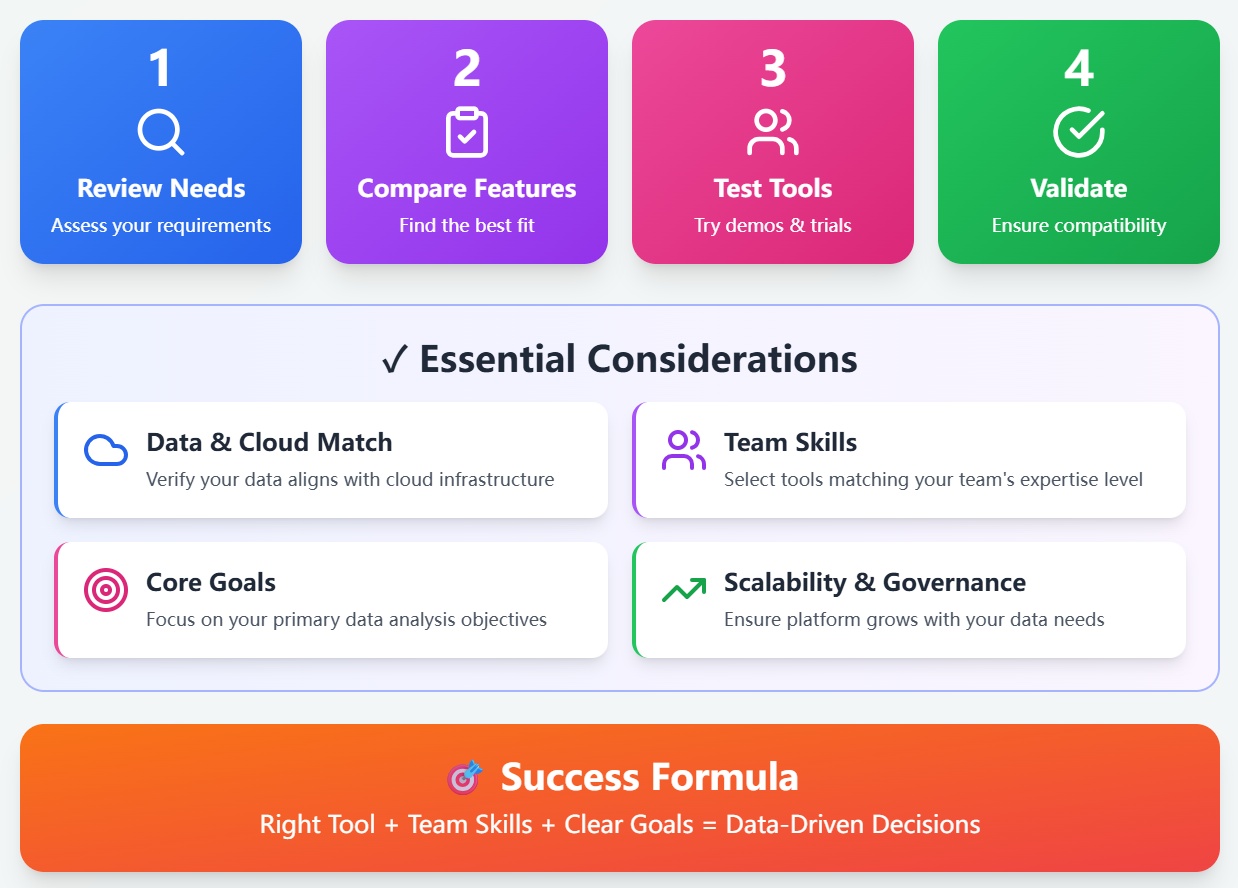
Use the table below to see what matters most when you evaluate AI tools for data and decisions:
| Factor | Description |
|---|---|
| Risk Management | You need clear ways to manage risks as AI becomes part of your daily decisions. |
| Assessment and Validation | Test and validate your AI tools to keep trust in your data and decisions. |
| Diverse Methodologies | Use different ways to measure how well your data tools work for your decisions. |
AI data analysis tools will keep changing. You will see more no-code solutions, synthetic data, and better ways to manage data across clouds. These trends help you make smarter decisions and get more value from your data. Try FineChatBI’s free demo to see how easy it is to turn your data into better decisions.
FAQ

The Author
Lewis
Senior Data Analyst at FanRuan
